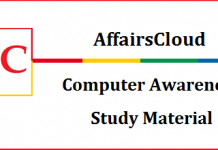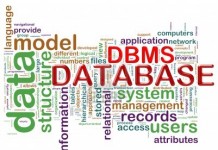Data Communication is the exchange of data in the form of 0s and 1s between a sender and receiver through some external transmission medium such as cable wire. Data communication aims in transfer of data and maintenance of data but here the actual information is not generated during the process.
Difference between Data and Information
The two words Data and information may sound alike and used frequently by everyone but have a lot of differences in them.
Data are plain facts and instructions represented in formalized manner for communication. When the data is processed organized and presented in a given context they become an information.
Characteristics of Data Communication system
The effectiveness of data communication system depends on three characteristics.
Delivery: The system must deliver data to the right destination.
Accuracy:Data must be transferred accurately .
Timeliness: Data must be transferred in a timely manner.
Components of Data Communication
Message: This is the information to be delivered. It can be a image, text, audio, video, or a number.
The Sender: The sender is a device or person who send the data. It can be sent using a phone, computer.
The receiver: The receiver is a one who receives the data.
The medium: The physical path by which the message travels from source to destination. Eg twisted pair,coaxial cable, fiber optics
Protocol: It is the set of rules that govern data communication. It provide agreement between the sender and receiver.
Types of Data Transmission
Analog Data Transmission
Digital Data Transmission
Analog data takes on continuous values on some interval. The most familiar example of analog data is audio signal. Frequency components of speech may be found between 20 Hz and 20 kHz.
Another common example of analog data is video. The outputs of many sensors, such as temperature and pressure sensors, are also examples of analog data.
Digital data takes on discrete values; eg. a computer’s output. – Analog transmission is a means of transmitting analog signals regardless of their content. The data may be analog or digital. – Digital transmission is the transfer of information through a medium in digital form. A digital signal can be transmitted only for a limited distance.
Transmission Medium
There are two basic categories of transmission media – guided and unguided media.
Guided transmission media use cabling system that guides the data signals along a specific path. Data signals are bound by the cabling system. Guided media is also known as bound media.
Unguided transmission media consists of a means for the data signals to travel but nothing to guide them along a specific path.
Transmission Mode
It is the direction of signal flow between two linked devices.
Types of Transmission mode
Simplex
Half Duplex
Full Duplex
Simplex
Here the communication is unidirectional. Only one of the two devices can transmit data and other can receive data.
Half Duplex
In half duplex both the devices can transmit data and receive data but not at the same time.
Eg: Walkie talkie
Full Duplex
In full duplex both the devices can send and receive data at the same time.
Eg: mobile phone.





